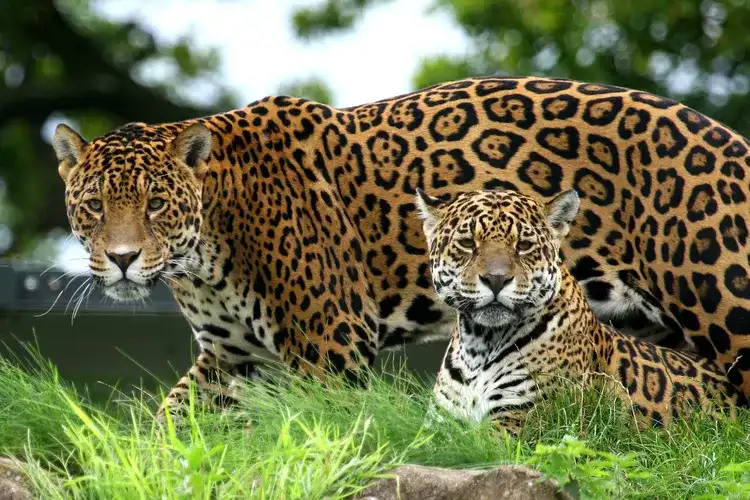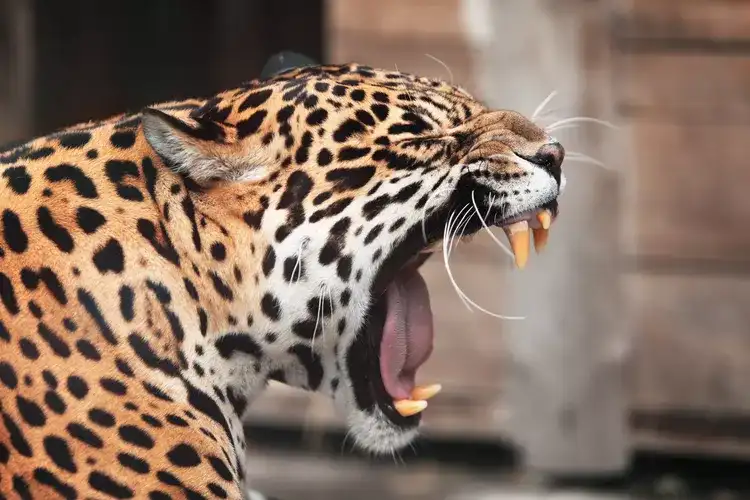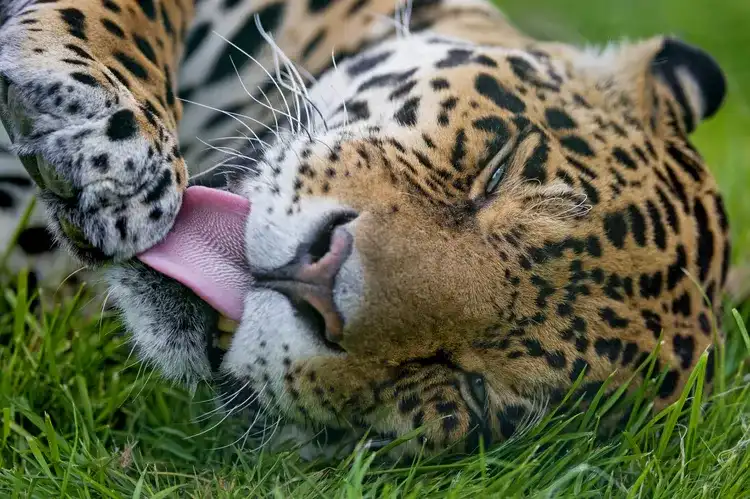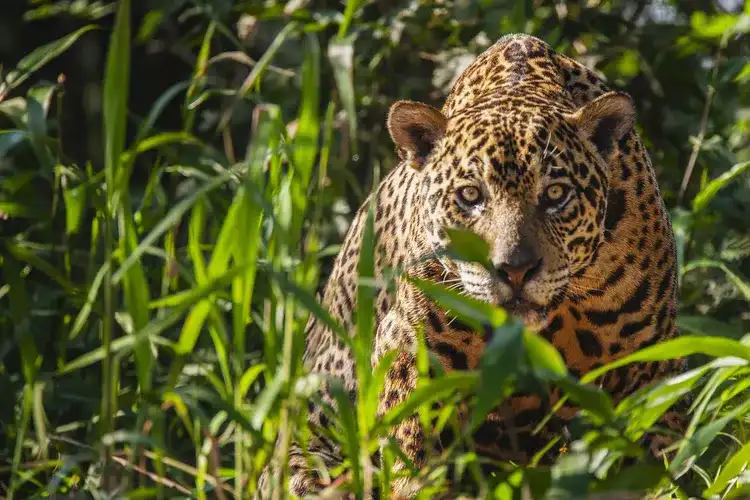Jaguars, easily recognized by their stunning yellow-orange coats adorned with dark rosettes, inhabit forested regions across South, Central, and parts of North America. As the largest cat species native to the Americas and the only extant member of the Panthera genus in the region, they hold a crucial place in the natural world.
A century ago, jaguars roamed from the southwestern United States down to Argentina. However, habitat loss and deforestation have reduced their historical range by 46%. Today, they are mostly confined to the Amazon basin, and their numbers are steadily declining, making conservation efforts more urgent than ever.
Fast Facts About Jaguars
- Common Name: Jaguar
- Scientific Name: Panthera onca
- Average Lifespan in the Wild: 12–15 years
- Average Lifespan in Captivity: Up to 20 years
- IUCN Red List Status: Near Threatened
1. Jaguars Possess the Most Powerful Bite Among Big Cats (Relative to Size)
Thanks to their muscular build, large head, and strong canines, jaguars boast the most powerful bite force relative to their size among big cats. Although a tiger’s bite force may measure stronger absolutely, jaguars, being smaller, have denser bite power. Their jaws can crush the skulls of prey and pierce through the thick hides of caimans with ease, an impressive evolutionary advantage.
2. These Big Cats Love the Water

Unlike most felines, jaguars are excellent swimmers and are frequently found near rivers, lakes, and swamps. Their natural affinity for water sets them apart from other big cat species. Dense forest cover, abundant prey, and access to water are key habitat requirements for jaguars, though they are also sometimes seen in grasslands and dry woodlands.
3. Male Jaguars Command Much Larger Territories
In Mexico, male jaguars typically maintain territories around 100 square kilometers, while females’ territories are about half that size. Males patrol larger areas daily, marking territory through vocalizations, tree scratching, and scent marking to fend off rivals and secure mating opportunities.
4. Jaguars Are Solitary Animals
Typically, jaguars prefer to live and hunt alone. They maintain and defend exclusive territories, ensuring minimal overlap with others. Female jaguars raise their cubs independently, nurturing them until they are about two years old, at which point the young must begin to fend for themselves and establish their own territories.
5. They Are Frequently Confused With Leopards

Though jaguars and leopards look similar at first glance, with their golden coats and black rosettes, key differences set them apart. Jaguar rosettes are larger, contain small central spots, and appear more fragmented. Furthermore, jaguars are bulkier with broader heads and shorter legs. While jaguars are native to the Americas, leopards are found in Africa and parts of Asia.
6. Jaguars Are Both Diurnal and Nocturnal Hunters
Jaguars are versatile hunters, active during both day and night. Their superior night vision allows them to stalk nocturnal prey effectively. Studies in Belize and Venezuela have shown that the majority of jaguar activity—up to 70% in some areas—occurs at night, making them highly adaptable predators.
7. They Have a Rich Cultural and Mythological History
Jaguars have long been revered in the mythology of indigenous peoples across the Americas. The term “yaguara” from the Tupi-Guarani languages translates to “wild beast that overcomes its prey in a single bound.” Beyond South America, jaguars also feature in the lore of Native American tribes in the southwestern United States, symbolizing strength and stealth.
8. Jaguars Can Roar But Not Purr

Unlike domestic cats, jaguars have an elastic ligament in their throat that enables them to roar. This ability, shared with lions and tigers, allows for deep, resonant vocalizations. Male roars are louder and used especially during the mating season, a phenomenon that unfortunately can be exploited by poachers who mimic their calls.
9. Jaguars Are Opportunistic Feeders
When it comes to diet, jaguars are remarkably adaptable. They hunt a wide variety of prey, including mammals, birds, and reptiles. Jaguars mainly ambush their prey on the ground but can also climb trees to leap down on unsuspecting animals. They often consume large kills over several days to conserve energy, making them efficient predators in the wild.
10. Their Rough Tongues Aid in Eating

In addition to their incredible bite force, jaguars possess rough tongues covered with tiny spines called papillae. These structures help them scrape meat off bones and also assist in grooming. This adaptation allows jaguars to thoroughly consume their kills and maintain their sleek, clean coats.
11. Black Jaguars Are Not Uncommon
Melanism a genetic mutation causing an overproduction of pigment results in black jaguars. About 10% of the jaguar population exhibits this trait, although it is more prevalent in dense rainforest regions like Costa Rica. While black jaguars appear completely dark from a distance, under certain lighting, their distinctive rosette patterns can still be seen.

Fun fact: “Black panther” is not a separate species. It is a term used to describe any melanistic big cat, including leopards and jaguars.
12. Jaguars Have Lost Half of Their Historic Habitat
Once ranging from the southwestern United States to Argentina, jaguars have seen a dramatic contraction in their territory. They have been extirpated from areas like Arizona, New Mexico, and much of northern Mexico and Uruguay. By 2002, jaguars occupied only 46% of their original range, a figure that slightly improved to 51% by 2008. The Amazon basin remains their last stronghold, home to over half of the world’s jaguar population.
Despite rare sightings of individual jaguars in Arizona between 2011 and 2017, their presence in the U.S. is now considered extremely limited.





